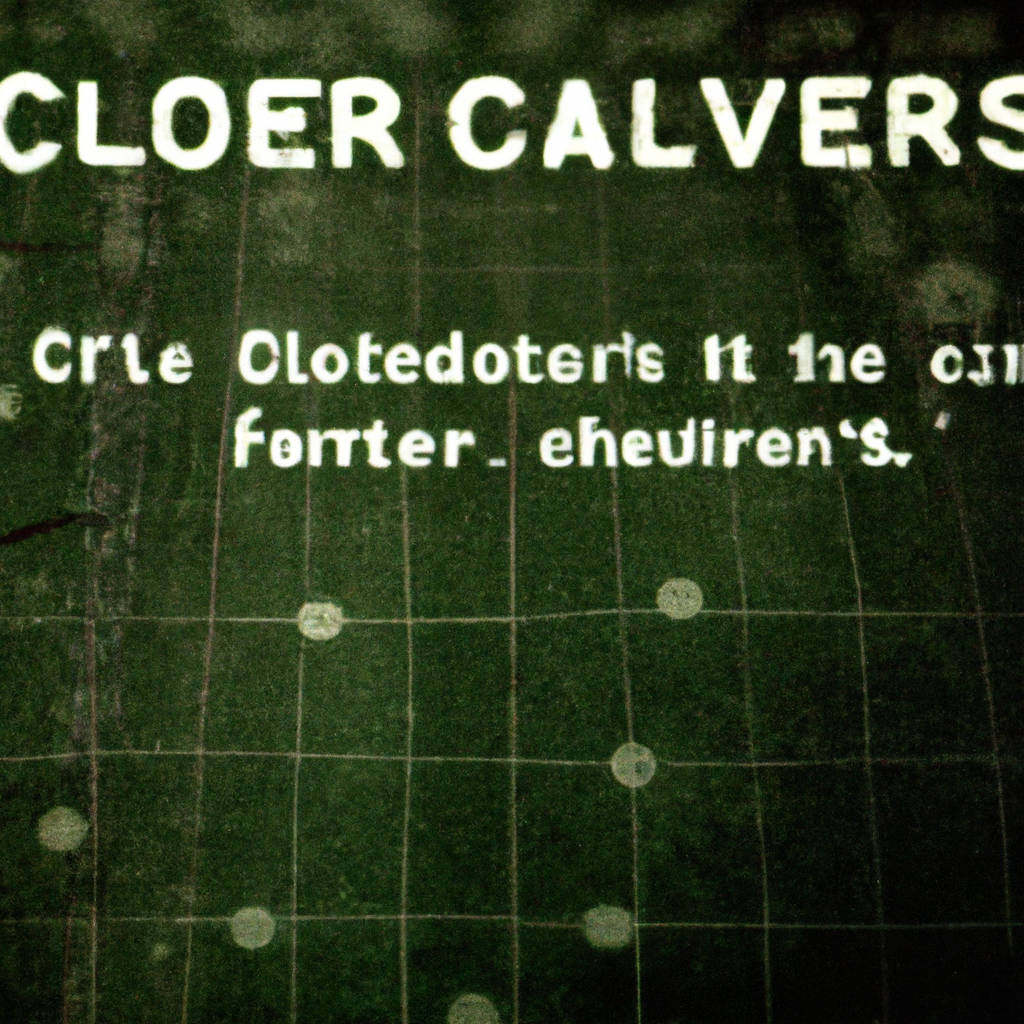Deciphering the Cloverfield Timeline
The Cloverfield franchise, known for its cryptic storytelling and complex narrative, has intrigued audiences since the release of the first movie in 2008. Deciphering the Cloverfield timeline can be quite a challenging task, given the intricate web of events, characters, and timelines presented in the series. It all begins with the original Cloverfield movie, which follows the events of a massive creature’s destructive rampage in New York City. The second film, “10 Cloverfield Lane,” released in 2016, introduces an entirely different narrative, focusing on a woman who wakes up in a bunker after a supposed alien invasion.
Then comes “The Cloverfield Paradox” in 2018, which explores the origins of the chaos in the multiverse, suggesting that experiments with a particle accelerator caused a rift in time and space, unleashing chaos across multiple dimensions. The three movies do not follow a linear timeline but instead, they are interconnected through the multiverse theory, which states that different universes exist parallel to each other. In essence, each film offers a different perspective on the same catastrophic event, making the Cloverfield timeline more of a web than a straight line.
The series encourages viewers to piece together clues from each movie to understand the broader narrative. The Cloverfield timeline is a fascinating exploration of multiverse theory and the catastrophic consequences of human curiosity and scientific experimentation.

The Cloverfield Paradox
The Cloverfield Paradox is a fascinating science fiction horror film that was released in 2018. This movie, directed by Julius Onah, is the third installment in the Cloverfield series, following Cloverfield (2008) and 10 Cloverfield Lane (2016). The film is set in a near-future scenario where Earth’s energy resources are nearly depleted, prompting a team of international scientists aboard an orbiting space station to test a device that could provide limitless energy.
However, their experiment inadvertently opens up a portal to a parallel universe, unleashing a series of terrifying and inexplicable events. The paradox referred to in the title is the theoretical consequence of their actions, causing chaos and destruction both on their space station and back on Earth. The film’s cast includes Daniel Brühl, Elizabeth Debicki, Aksel Hennie, Gugu Mbatha-Raw, Chris O’Dowd, John Ortiz, David Oyelowo, and Zhang Ziyi. The Cloverfield Paradox was released unexpectedly by Netflix immediately following the Super Bowl LII broadcast, which created a significant buzz. The movie received mixed reviews, with some praising its production values and performances, while others criticized its narrative coherence.
Regardless, it maintained the Cloverfield tradition of ambitious storytelling and innovative marketing strategies. Despite its polarizing reception, The Cloverfield Paradox remains an intriguing exploration of alternate universes, the risks of unchecked scientific advancement, and the lengths people will go to save their world.
Cloverfield
Cloverfield is a renowned American science fiction horror film that was released in 2008. Famed for its unique use of found footage cinematography, the movie provides a firsthand perspective of catastrophic events as captured by the main characters via a hand-held video camera. The film’s narrative revolves around a group of friends in New York City who are forced to navigate and survive the chaos and destruction caused by a colossal monster and its numerous, smaller yet equally lethal, offspring.
This film, produced by J.J. Abrams and directed by Matt Reeves, stands as a celebrated example of a modern monster movie. It’s known for its innovative marketing campaign and its mysterious, unpredictable plotline. The narrative unfolds through the lens of the protagonist’s camcorder, which adds an element of realism and immediacy to the terrifying experiences of the characters.
Cloverfield’s plot is a stark departure from the conventional storytelling methods of most Hollywood monster movies. Instead of focusing on the military or scientific response to an alien invasion, Cloverfield focuses on the individual human experience amidst a catastrophic event. This approach allows for a more intimate connection with the characters and a deeper empathy for their plight.
The movie was a commercial success and was applauded for its fresh take on the monster genre. Despite its low budget, Cloverfield managed to generate a significant impact upon release, which spawned a ‘Cloverfield franchise’, including sequels, comic books, and merchandise.
In conclusion, Cloverfield represents a significant milestone in the evolution of the monster movie genre. The film’s unique narrative style coupled with its innovative marketing strategy ensured its commercial success and enduring appeal amongst audiences globally. Its legacy continues to influence contemporary filmmakers and it remains a celebrated piece of cinematic history.

10 Cloverfield Lane
10 Cloverfield Lane is a captivating cinematic masterpiece that explores themes of suspense, mystery, and survival. Directed by Dan Trachtenberg, this film is a spiritual successor to the 2008 film Cloverfield, though it is not a direct sequel. The narrative follows the riveting story of a woman named Michelle, portrayed by Mary Elizabeth Winstead, who wakes up in a bunker after a terrible car accident. The bunker is owned by Howard, played by John Goodman, who claims that a catastrophic event has rendered the outside world uninhabitable. However, Michelle remains skeptical and seeks to escape, unsure if she can trust Howard’s words.
John Goodman delivers an exceptional performance as Howard, perfectly capturing the essence of his character – a man who is at once protective and possibly unhinged. His character keeps the audience on their toes, as they are left uncertain whether he is a savior or a captor. Mary Elizabeth Winstead’s portrayal of Michelle is equally compelling. She embodies a strong, resourceful woman who refuses to succumb to despair, striving to uncover the truth and escape.
10 Cloverfield Lane’s gripping narrative and tense atmosphere are further enhanced by Bear McCreary’s thrilling musical score. The movie effectively utilizes the confined space of the bunker, creating a sense of claustrophobia that adds to the overall tension and suspense. The film’s narrative takes several unexpected twists and turns, keeping the audience engaged throughout.
The ending of 10 Cloverfield Lane has sparked numerous interpretations and debates among viewers, making it a movie that lingers in the mind long after the credits roll. Its exploration of human psychology under extreme conditions, combined with its suspenseful atmosphere and compelling performances, have made it a standout film in the thriller genre. Despite its connection to Cloverfield, 10 Cloverfield Lane stands as a unique and memorable film in its own right. With its compelling narrative and performances, it is a movie that keeps viewers on the edge of their seats until the very end.
Future or Past: The Next Chapter
As we stand at the precipice of tomorrow, the question lingers between embracing the future or clinging to the past; it’s the next chapter we must write. The past, a trove of experiences, lessons and memories, serves as our foundation, solidifying our identity and shaping our perception. It’s tempting to get wrapped up in the safety and familiarity of what’s already transpired, but this can often lead to stagnation and hinder progress. On the other hand, the future, shrouded in uncertainty and the promise of the unknown, beckons us with endless possibilities. It’s in this realm of the not-yet-known that we can let our imaginations run wild, envisioning advances in technology, societal shifts, and personal growth.
However, it’s crucial to recognize that the future is not merely an extension of the past but a realm of untapped potential and unprecedented challenges. To navigate this complex landscape, we must be willing to adapt, innovate, and take risks. We need to foster a mindset that embraces change rather than fearing it, that sees the unknown not as a threat but as an opportunity for learning and growth.
Furthermore, we must remember that the future is not a predetermined fate but a canvas awaiting our brush strokes. We are the architects of our destiny, and every decision we make, every action we take, shapes the trajectory of our journey. The future is in our hands, and it is up to us to mold it into a reality that reflects our hopes and dreams.
In conclusion, while the past serves as a valuable guide, our focus should be on crafting a future that is fulfilling and sustainable. The next chapter is ours to write, and the pen is in our hands. It’s up to us whether we choose to dwell in the comfort of the past or venture boldly into the uncharted territories of the future.

